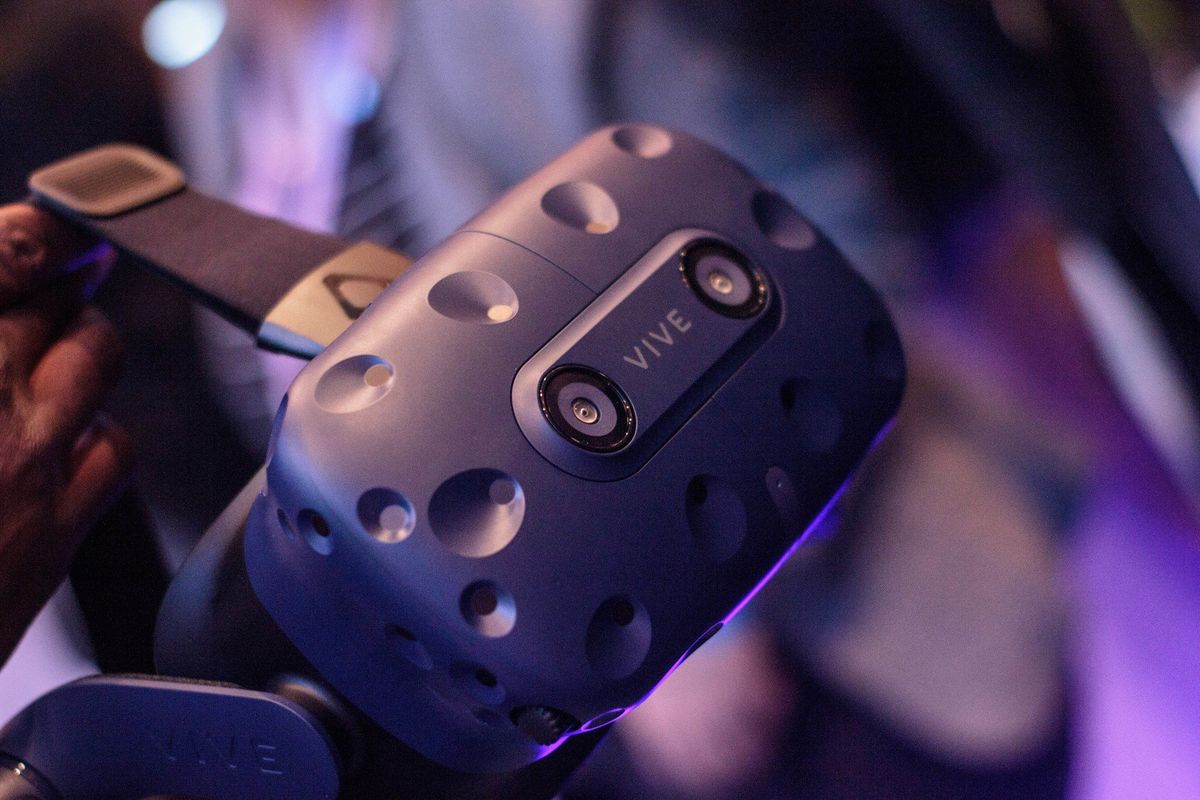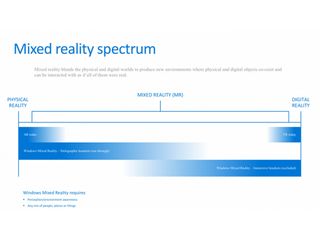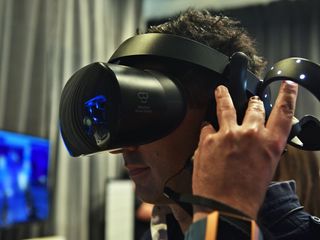HTC Vive Pro is (oddly) the best Windows Mixed Reality headset you can buy
Microsoft needs to do more than "invent" Windows Mixed Reality, it needs to lead.

While receiving quite a bit of mockery for the branding, Microsoft's vision for Windows Mixed Reality (WMR) as a spectrum of experiences is compelling. And for a little while there, it felt like Microsoft was going to lead the charge on demonstrating this spectrum, with WMR headsets on the far side of the VR end and HoloLens on the far side of the AR end.
Microsoft has spoken on several occasions about devices existing in the middle, capable of both VR and augmented reality (AR) experiences, but if you're looking for those experiences today, it isn't Microsoft you should look to.
Instead, the HTC Vive Pro seems to be the first major headset aiming to offer both AR and VR in the same headset.
Defining Windows Mixed Reality

Microsoft hasn't been shy about its goals for Windows Mixed Reality. Microsoft is building for a future where "holographic computing" is the default way to interact with the technology around us. The HoloLens experience, heavy and expensive as it may be, offers a glimpse into a world where you wear the whole computer and can do everything virtually. At the same time, the "fully occluded" VR headsets making up the Windows Mixed Reality brand right now have lowered prices and made default a tracking method that works for any size room.
Related: What's the difference between Augmented Reality and Mixed Reality?
What HTC is offering right now is something in between these two ends of the spectrum: a headset capable of immersive VR and compelling AR. What started with the original Vive headset, with a single camera that could allow you to see around the room when you needed to, has grown into the multi-camera Vive Pro with its AR SDK. Developers can now write games where the real world around you is the playspace, similar to how you would play with HoloLens. Your hands can be the controllers, and your floor can help dictate what the environment looks like.
This kind of pass-through AR isn't the only thing you can do with an HTC Vive. The Vive Tracker enables other players to enter the playspace you are and play with you, even though they don't have a headset of their own. HTC has offered several demos of games where a Vive Tracker and a phone allowed someone to play alongside a VR player, seeing what they see through the phone screen and doing more than just watching and speaking.
Get the Windows Central Newsletter
All the latest news, reviews, and guides for Windows and Xbox diehards.
Currently, WMR or HoloLens can't do any of this. The cameras on the front of the WMR headsets can't pull double duty aan s active tracking system and depth cameras for AR tracking, and while HoloLens can join WMR apps written to operate that way, it's not nearly as interactive as a Vive Tracker. It's clear this is the direction Microsoft is aiming for, but so far we've received little evidence this goal will be realized in the next year.
What's next for Windows Mixed Reality?

We know for sure there's a new HoloLens on the way, and with that comes some exciting new tech that will inevitably trickle down to the next generation of fully-occluded headsets. Microsoft isn't on an immediately competitive release cycle along with HTC or Oculus, like you'd see with Apple and Google, so there's no obvious cadence to the Mixed Reality roadmap right now. That's exciting because it means Microsoft is more focused on research than it is on delivering. But this can be frustrating for Mixed Reality fans eager for what comes next.
If you want to explore deeper into mixed reality and the potential found in combining VR and AR, HTC is the company delivering what you want today.
There are also third-party solutions for adding AR to VR headsets, though none are currently built for Windows Mixed Reality. The ZED Mini camera, for example, offers incredible depth tech and constant updates to improve the overall experience while developers play in this new sandbox. But in addition to the lack of native WMR support, this camera is going to run you $450. That's a lot to swallow for an accessory when your headset probably didn't cost that much to begin with.
If you want to explore deeper into Mixed Reality and the potential found in combining VR and AR, HTC is the company delivering what you want today. If your goal is to wait for Microsoft as it continues to build both sides of the spectrum towards the inevitable middle, there's a good chance you're going to be awaiting a while.
Russell is a tech nerd who chases the best of everything, from phones to game consoles to laptops and everything glowing or beeping. He's the Managing Editor of gaming content for Mobile Nations and can be found contributing to all of the Mobile Nations sites. Reach out on Twitter!
